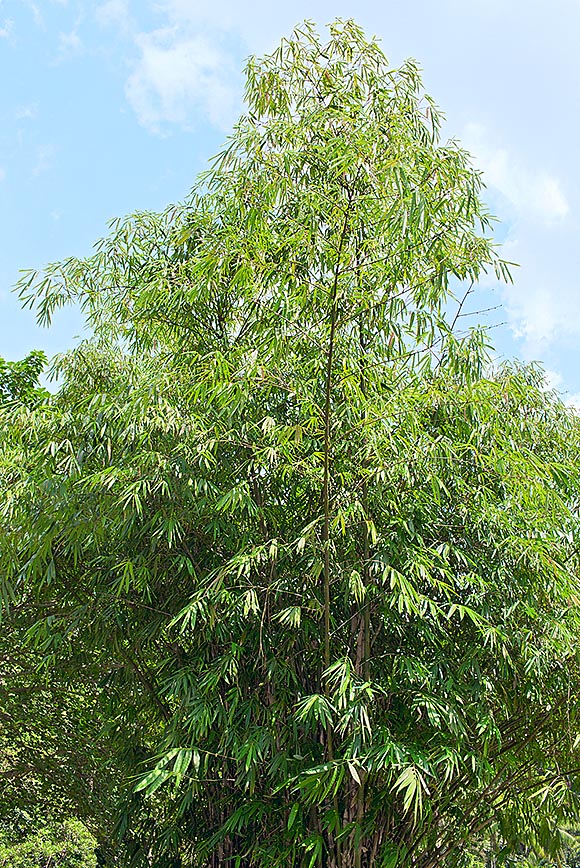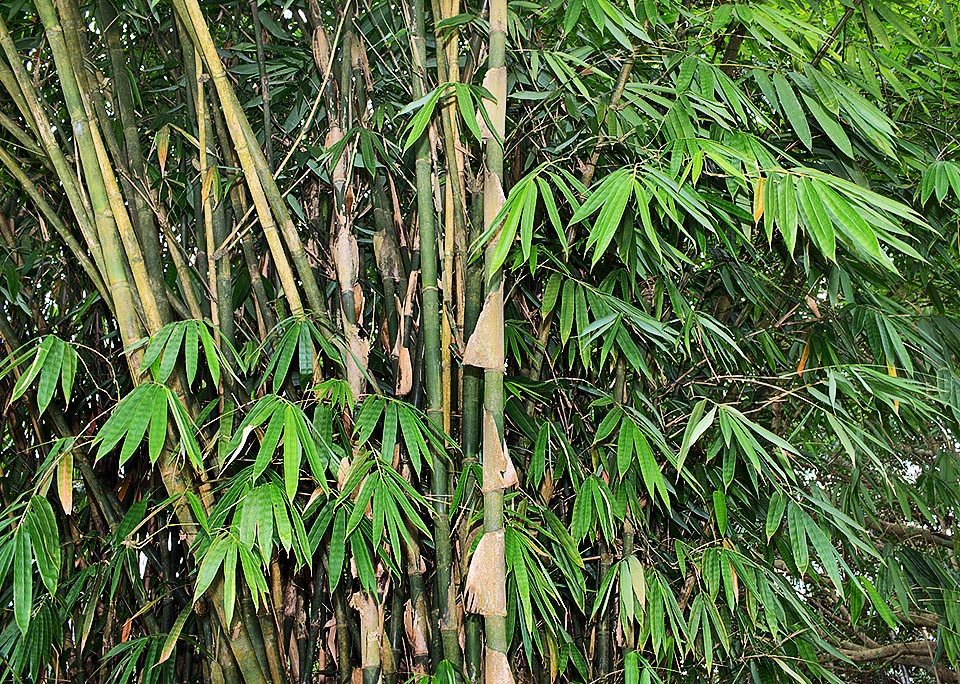Family : Poaceae

Text © Pietro Puccio

English translation by Mario Beltramini

Nearly centenary specimen of Gigantochloa ridleyi cultivated in Singapore Botanic Gardens © Mazza
The species, known only in cultivation, is supposed to be native to the Peninsular Malaysia.
The name of the genus is the combination of the Greek substantives “gigas” = giant and “chloe” = grass, with obvious reference.
The species is honoured to the English botanist Henry Nicholas Ridley (1855-1956).
Common names: tiying kaas, tying aya (Malaysian).
The Gigantochloa ridleyi Holttum (1956) is a densely caespitose evergreen perennial species, rhizomatous, with erect cylindrical stems (culms) up to 16-18 m long and of 10 cm of diameter with 30-45 cm long internodes, glabrous, of green colour often with yellow striae; almost triangular persistent bracts, up to 25 cm long, covered by thick blackish down and ramifications at the nodes.
The leaves, alternate, are oblong with pointed apex up to 40 cm of length and 6-8 cm of breadth.
It reproduces by division of rhizomes.
Species of which are not known specimens in the wild, it is thought that it’s a natural hybrid, presently (2013) is cultivated in Bali (Indonesia), in Peninsular Malaysia and in Singapore mainly for ornamental purposes; locally the culms are utilized as construction material for rural dwellings; flowering specimens are not known in these areas.
Cultivable in the tropical and subtropical climate zones with high temperatures and humidity, in full sun or partial shade, on soils from slightly acidic to neutral, kept almost constantly humid.
The specimen here shown was collected by the aforementioned Henry Nicholas Ridley, director of the Singapore Botanic Gardens from 1888 to 1912, in the village of Seberang Perai, in Malaysia, where it was cultivated, and is supposed to be native to the north of this region.
They had thought immediately about a new species and for the scientific description they used this specimen. It is already more than 90 years old but it has never flowered.

Found in the Malaysian village of Seberang Perai has been used for the species description. It has never flowered and is thought to come from the north of that zone © Giuseppe Mazza
Synonyms: Gigantochloa maxima var. ridleyi (Holttum) Samsuddin (1980).
→ To appreciate the biodiversity within the POACEAE family please click here.
